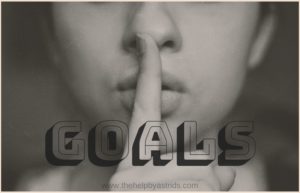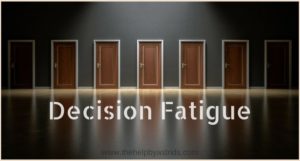 A famous and overused tip is to “follow your dreams” and a hundred other iterations of it. We’re all told to dream big and then do whatever it takes to achieve that goal. That tip is, more often than not, followed up by proclaiming your goal to the whole world. You know, to keep yourself accountable.
A famous and overused tip is to “follow your dreams” and a hundred other iterations of it. We’re all told to dream big and then do whatever it takes to achieve that goal. That tip is, more often than not, followed up by proclaiming your goal to the whole world. You know, to keep yourself accountable.
Don’t get me wrong. It is always a good idea to follow your dreams if only to see how far you can go and what you can endure. My beef is with telling anybody within earshot that you’re “gonna go get ‘em!” If that tip works for you, well and good. However, there are some science-backed reasons for trying to keep your goals on the down-low and not sharing them (just yet) to the whole wide world.
When we are inspired to achieve a goal, we get really excited about it and want to let other people know as soon as possible. The reasons for spilling the beans vary from: you want to be held accountable for reaching it to you want others to rally you on and share your enthusiasm.
Why announcements and pronouncements might be a bad idea:
Announcing a goal might garner you premature praises, thus making you less likely to follow through. Social media makes it easy (so very easy) nowadays to get validation. One click and you get instant recognition. One study concludes that a person might think that social recognition is enough reward and may result to that person feeling that they’ve already achieved their goal and reducing his/her efforts.
The kind of praise you receive also plays a big factor in whether you follow through with your goal. One study divides praise into 2 categories: person praise and process praise. The results concluded that it is absolutely better to give process praise – praise related to how you plan to achieve your goal (that’s a really good plan!), versus person praise – praise directed towards the individual (you are very talented!)
And then there’s the fact that, if you’re just starting out on this goal reaching endeavor, you might easily get demoralized by negative feedback. Say for example, your goal is to start a self-care website. So you decide to announce it in a small circle, starting with family and friends. But then, a close friend tells you “Don’t you at least have training in order to be credible?” That might be a big demoralizer for you – and might even be a reason for you to abandon your goals altogether.
Another variation of that is hearing about a lot of competition. If you’re a beginner, hearing about other people who have “been there, done that and will probably do a better job than you could ever do” could knock you off your stilts. Researchers explain this as kind of a win by not losing mentality. It is loss aversion – “When the perception of ability becomes a major concern, competition may motivate students to make a low effort – a strategy to win by not losing.”
Do you believe that plans should be kept under wraps or are you an advocate of friendly announcements? Let us know! Stay humble, hustle hard.
 Ever wonder why you make bad food choices at the end of a tiresome day, why normally sound people snap at loved ones, or why it’s so hard to decide on where to have dinner with your group of friends?
Ever wonder why you make bad food choices at the end of a tiresome day, why normally sound people snap at loved ones, or why it’s so hard to decide on where to have dinner with your group of friends? I use a large 36” x 24” whiteboard to keep track of all my work projects – I use the personal Kanban Method to manage this. Actually, the personal Kanban is a pattern – there is no set method and it is highly customizable.
I use a large 36” x 24” whiteboard to keep track of all my work projects – I use the personal Kanban Method to manage this. Actually, the personal Kanban is a pattern – there is no set method and it is highly customizable. Working while on vacation has become the norm. But it is still wise to use your vacation leaves in order to recharge and make sure you increase your productivity when you get back to work. According to this survey from
Working while on vacation has become the norm. But it is still wise to use your vacation leaves in order to recharge and make sure you increase your productivity when you get back to work. According to this survey from  Do you feel stuck today? Sitting in front of your computer, you look at your workload and scan a small notepad where you’ve written your to-do list that’s tacked off to the side of your monitor. The notepad says “send out event invitations”, “meeting at 1 pm”, and “create style guide” as your priority tasks for the day. You hunker down and start to get to work. You stare at the screen. You have a spill proof mug full of coffee and your tools open on your PC or laptop, but inspiration does not come.
Do you feel stuck today? Sitting in front of your computer, you look at your workload and scan a small notepad where you’ve written your to-do list that’s tacked off to the side of your monitor. The notepad says “send out event invitations”, “meeting at 1 pm”, and “create style guide” as your priority tasks for the day. You hunker down and start to get to work. You stare at the screen. You have a spill proof mug full of coffee and your tools open on your PC or laptop, but inspiration does not come.